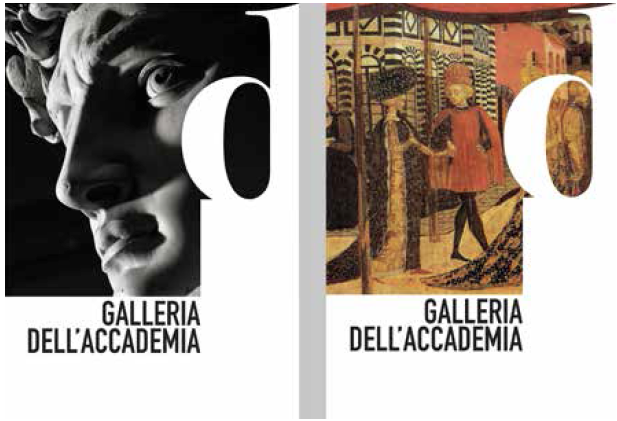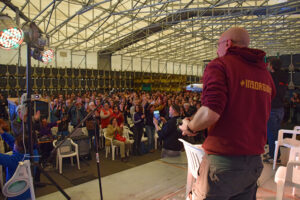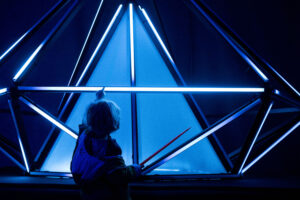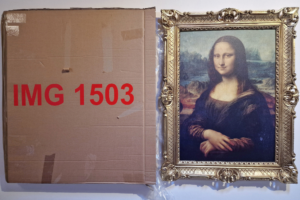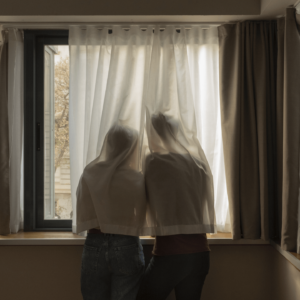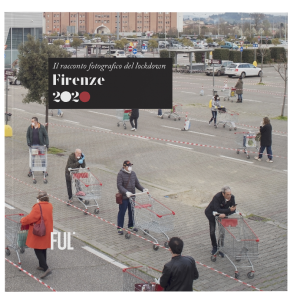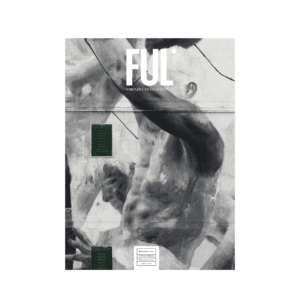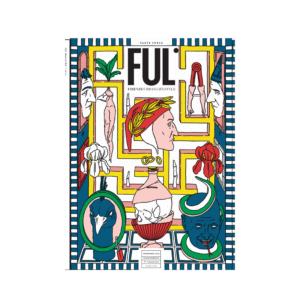SACIMX, il programma interdisciplinare di SACI in collaborazione con i principali musei fiorentini.
Un tempo i bambini venivano trascinati nei musei, adesso ti ci portano loro. Il museo si è trasformato in uno spazio partecipativo dove la nuova tentazione è la tecnologia: gli schermi provocano l’azione, non la persuasione. E l’azione, qui, significa comprensione e cultura. A SACI una classe non ci sembrava sufficiente per invitare gli studenti a riflettere sul nuovo ruolo del museo. Ecco che è nata l’idea di SACIMX – Designing the Museum Experience, un programma interdisciplinare per coinvolgere gli studenti sia con gli aspetti concreti sia con quelli impalpabili della visita a un museo.
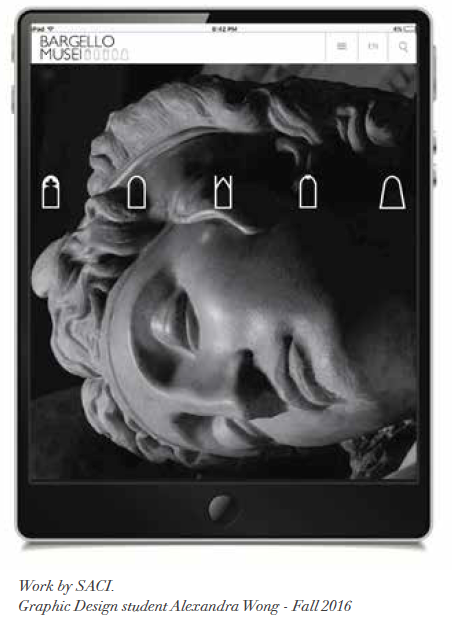 All’origine vi era da parte nostra il desiderio di creare delle internship più strutturate per dare la possibilità ai nostri studenti di lavorare in maniera significativa all’interno delle istituzioni museali fiorentine. Ma incontrando Paola D’Agostino (Bargello Musei) e Cecilie Hollberg (Galleria dell’Accademia), le due direttrici che per prime ci hanno aperto generosamente le porte dei loro musei, è stato subito chiaro che insieme avremmo potuto creare un progetto del tutto nuovo, che spazia dalle interviste ai visitatori fino alla concezione di nuove forme di fruizione ‒ prima, durante e dopo la visita.
All’origine vi era da parte nostra il desiderio di creare delle internship più strutturate per dare la possibilità ai nostri studenti di lavorare in maniera significativa all’interno delle istituzioni museali fiorentine. Ma incontrando Paola D’Agostino (Bargello Musei) e Cecilie Hollberg (Galleria dell’Accademia), le due direttrici che per prime ci hanno aperto generosamente le porte dei loro musei, è stato subito chiaro che insieme avremmo potuto creare un progetto del tutto nuovo, che spazia dalle interviste ai visitatori fino alla concezione di nuove forme di fruizione ‒ prima, durante e dopo la visita.
Gli studenti coinvolti in SACIMX sono quelli del Master di Storia dell’Arte e del MFA in Communication Design, insieme a quelli di Museology, Graphic Design, Illustration e Typography: alla fine del semestre presentano i progetti anche ai direttori dei musei che hanno commissionato i lavori; perché, altra particolarità di SACIMX è che i progetti a cui gli studenti devono lavorare rispondono alle precise necessità dei musei. In queste occasioni gli studenti danno il meglio in termini di “performance”, imparando nella pratica come esporre in maniera professionale una propria idea, ma soprattutto hanno la grande opportunità di ascoltare direttamente da chi lavora ai vertici di tali istituzioni i problemi di ordine burocratico e le necessità organizzative che ogni giorno devono affrontare.
In questo momento i nostri studenti stanno lavorando a modi per rendere accessibile la Galleria dell’Accademia a visitatori ipovedenti (partially sighted) e ciechi. A questo scopo, abbiamo organizzato un incontro con Niccolò Zeppi, direttore dell’Unione Ciechi Italiani di Firenze e con Giulia Polito, giovane cieca parziale, per comprendere bene quali siano le loro necessità, quali strumenti ritengono più idonei e quali fossero le modalità da seguire. Allo
stesso modo abbiamo incontrato chi lavora da molti anni nel campo dell’accessibilità nei musei, come la storica dell’arte Chiara Lachi dell’associazione “L’Immaginario”. Questi incontri sono aiuti concreti e fondanti non solo per la preparazione dei progetti, ma in un più ampio panorama didattico rendono palese quanto ogni progetto museale sia il frutto di una collaborazione tra molte figure professionali.
Tutto questo rende l’insegnamento più complesso ‒ più responsabilità, maggiore impegno (anche solo per creare le sinergie tra le varie classi coinvolte), ma allo stesso tempo assolutamente stimolante sia per noi sia per i gruppi di lavoro che si formano in classe. Stiamo già prendendo accordi per espandere il progetto e lavorare con altri musei di Firenze e dintorni. •
www.saci-florence.edu
ENGLISH VERSION>>>>
We once had to drag children to museums. Now they beg us to go! The museum has become a participative space, where technology is the new temptation: displays call for action, not persuasion. And, in this case, action means comprehension and culture. At SACI, we didn’t think that one course was sufficient to induce students to reflect upon the new role of museums. That is why we created SACIMX ‒ Designing the Museum Experience, an interdisciplinary program that engages students in both the concrete and the intangible aspects of the museum visit experience.
Our initial idea was to create more structured internships for our students so that their work experience inside Florentine museums would be more significant. But after a meeting with Paola D’Agostino (Bargello Musei) and Cecilie Hollberg (Galleria dell’Accademia), the two museum directors who, generously, were the first to open their doors to us, it was immediately clear that together we could create a completely new project—one that would range from interviews with museum visitors to the conception of new forms of experience before, during, and after a museum visit.
SACI students participating in SACIMX are MA in Art History and MFA in Communication Design candidates, together with undergraduates in Museology, Graphic Design, Illustration, and Typography. At the end of the term, students make presentations to the museum directors who have commissioned the projects—because one of the aims of SACIMX is that the projects meet very precise needs of the museums. During these presentations, students put on their best “performance.” They learn how to present their ideas in a professional way. Above all, they have a unique opportunity to learn directly from individuals who work inside the museums at the highest levels about the organizational needs and problems they face every day.
Currently, our students are working on a project to make the Galleria dell’Accademia accessible to the partially-sighted and the blind. To this purpose, we met with Niccolò Zeppi, Director of the Unione Ciechi Italiani di Firenze (the Florence chapter of the Italian Association of the Visually Impaired) and with Giulia Polito, a partially-blind youth, in order to better understand their needs, to learn which tools are most suitable, and which procedures should be followed. Similarly, we met with those who have worked for many years in the field of museum accessibility, such as the art historian Chiara Lachi of the L’Immaginario association. These types of meetings are of concrete and fundamental help, not only for the preparation of the projects, but also in wider didactic terms. They make it clear that every museum project is the result of a collaboration among multiple professionals.
All this makes our job as instructors more complex—there is greater responsibility, greater commitment (especially in creating synergy among the various classes involved). But at the same time, it is more stimulating—both for us and the students involved in the projects. We are already making arrangements to expand these projects and to work with other museums in and near Florence. •

